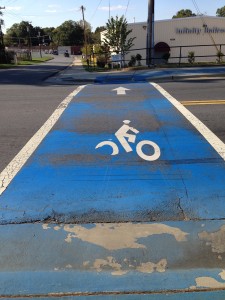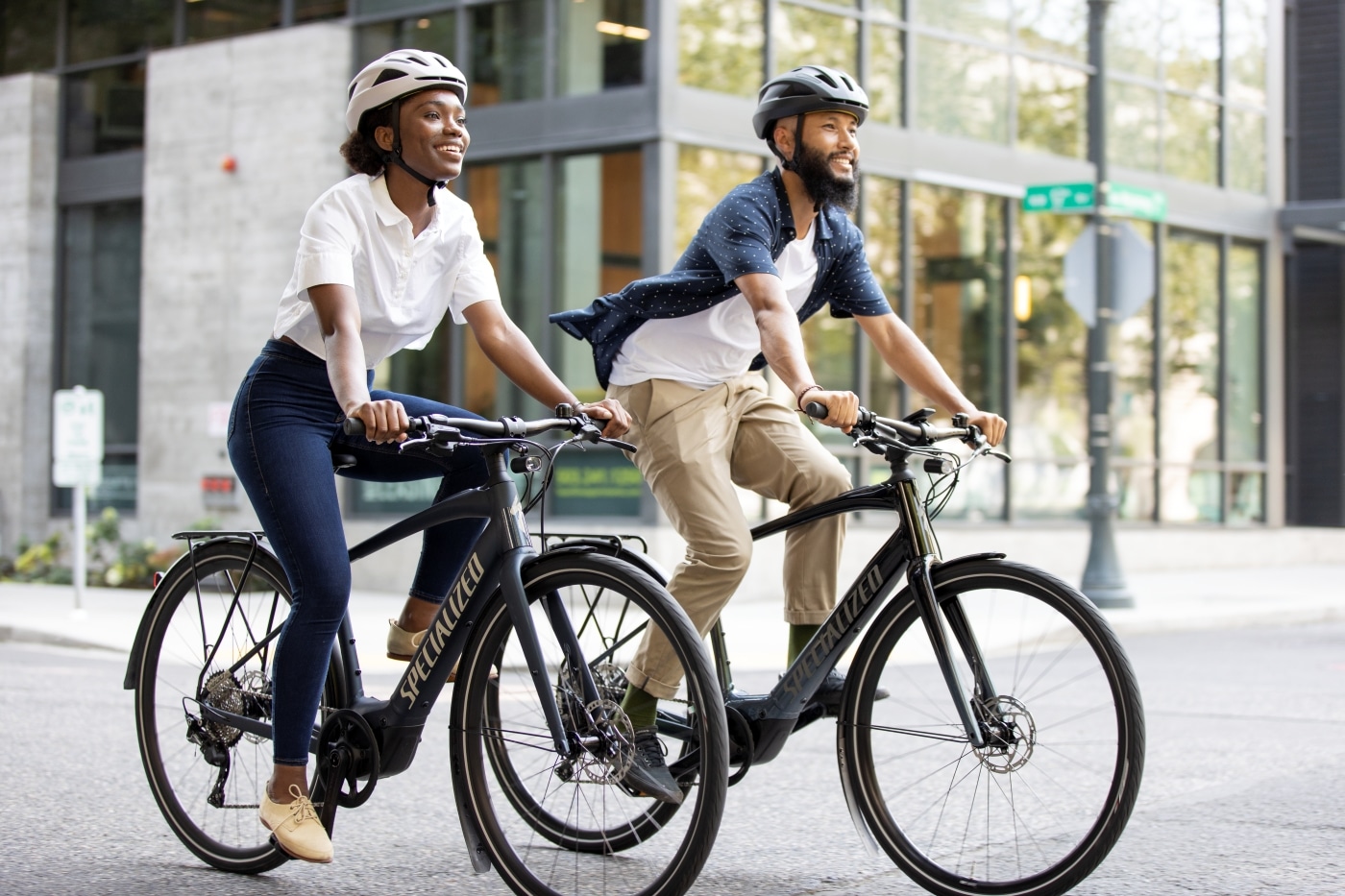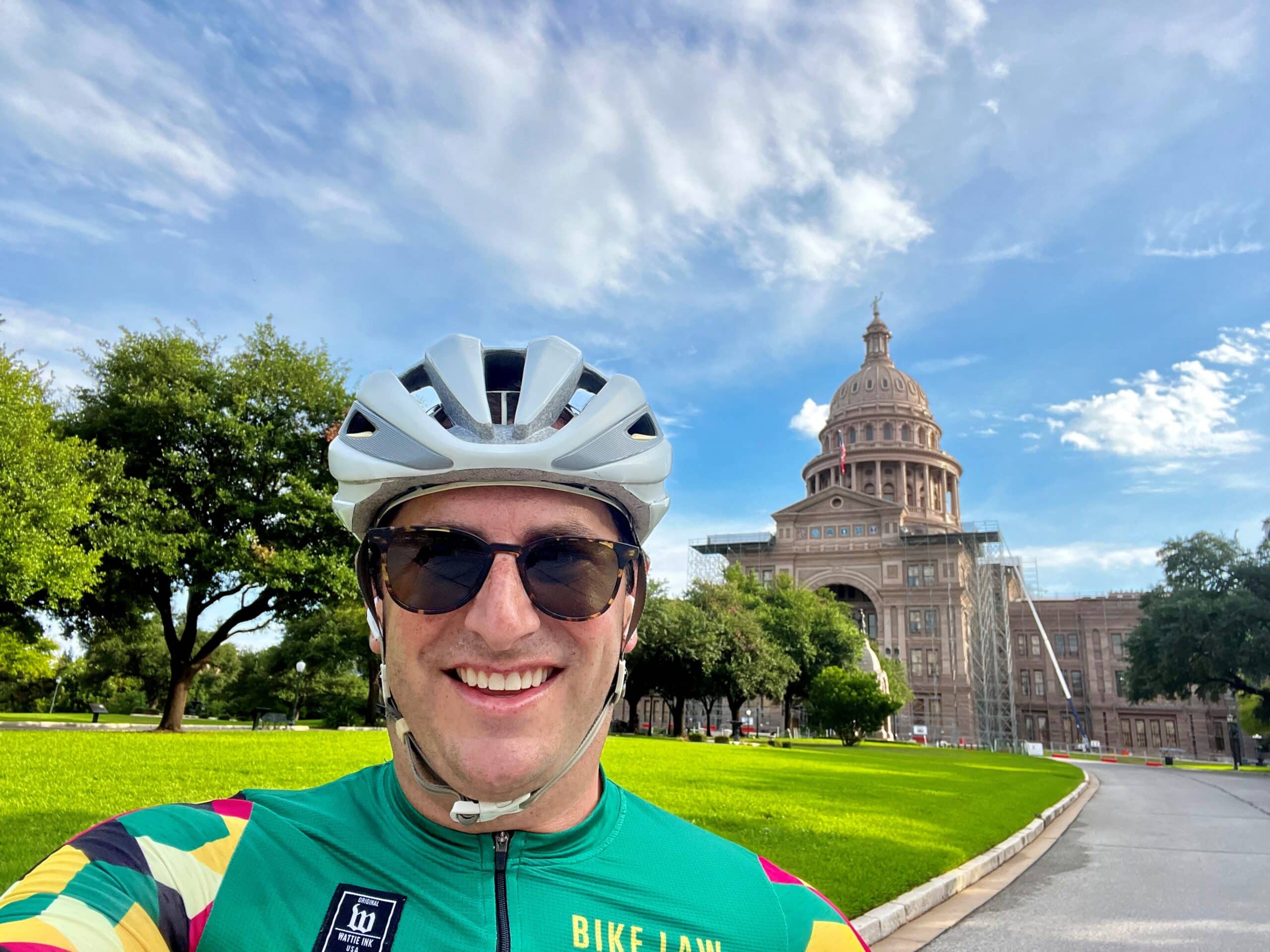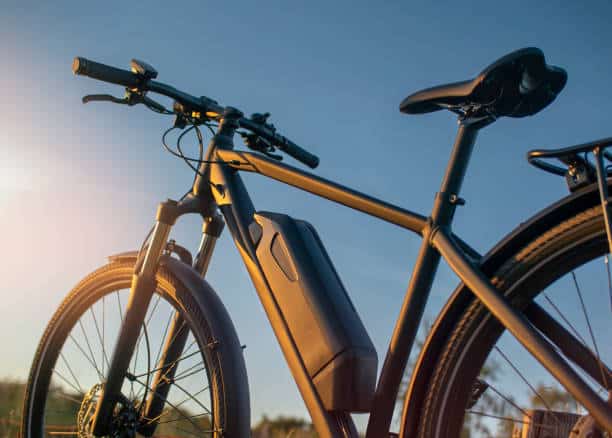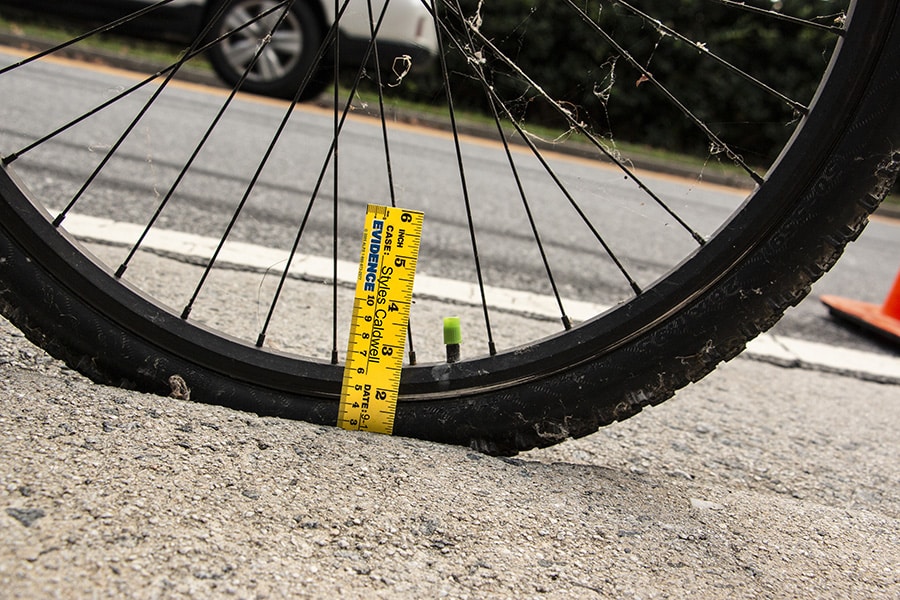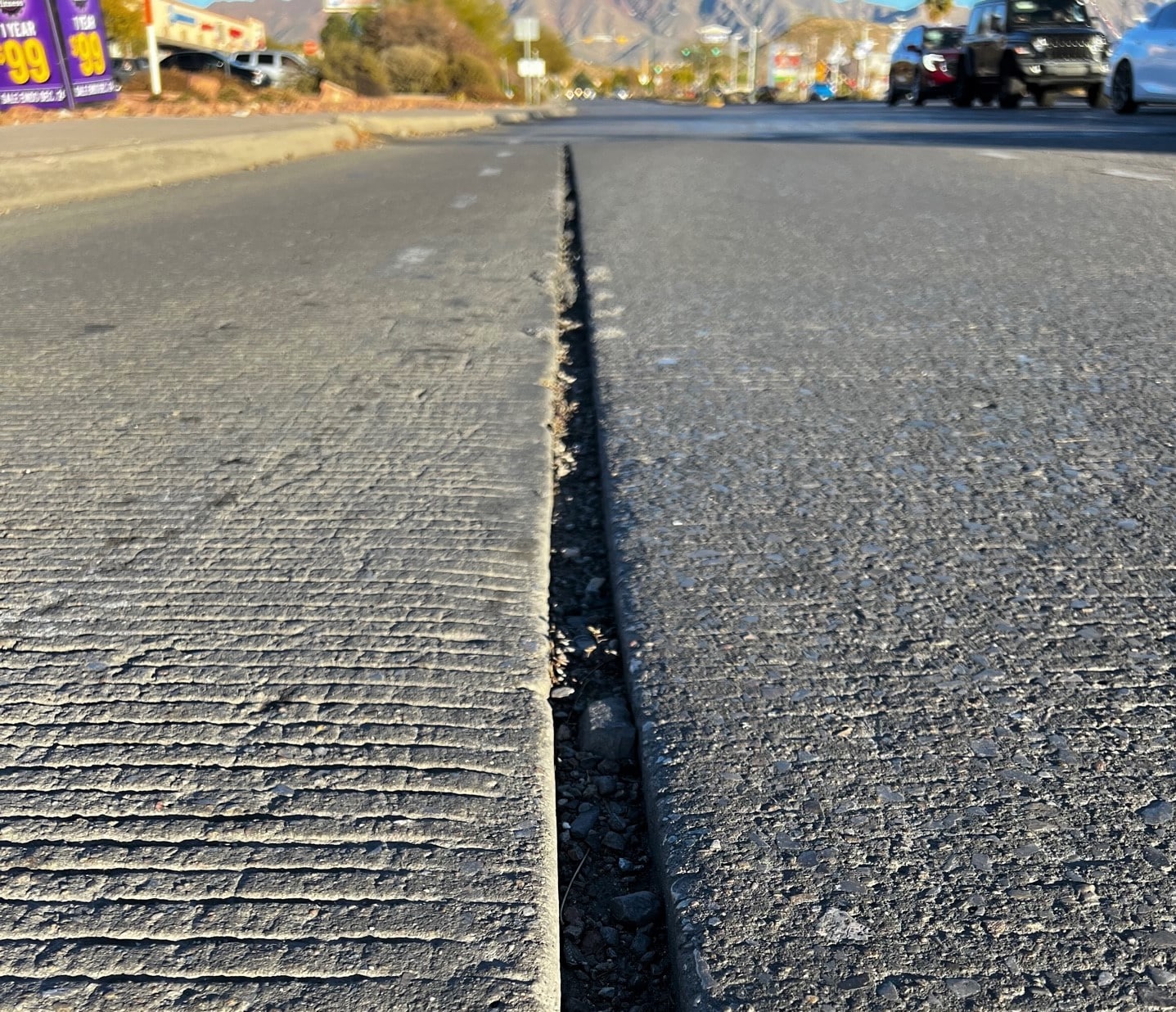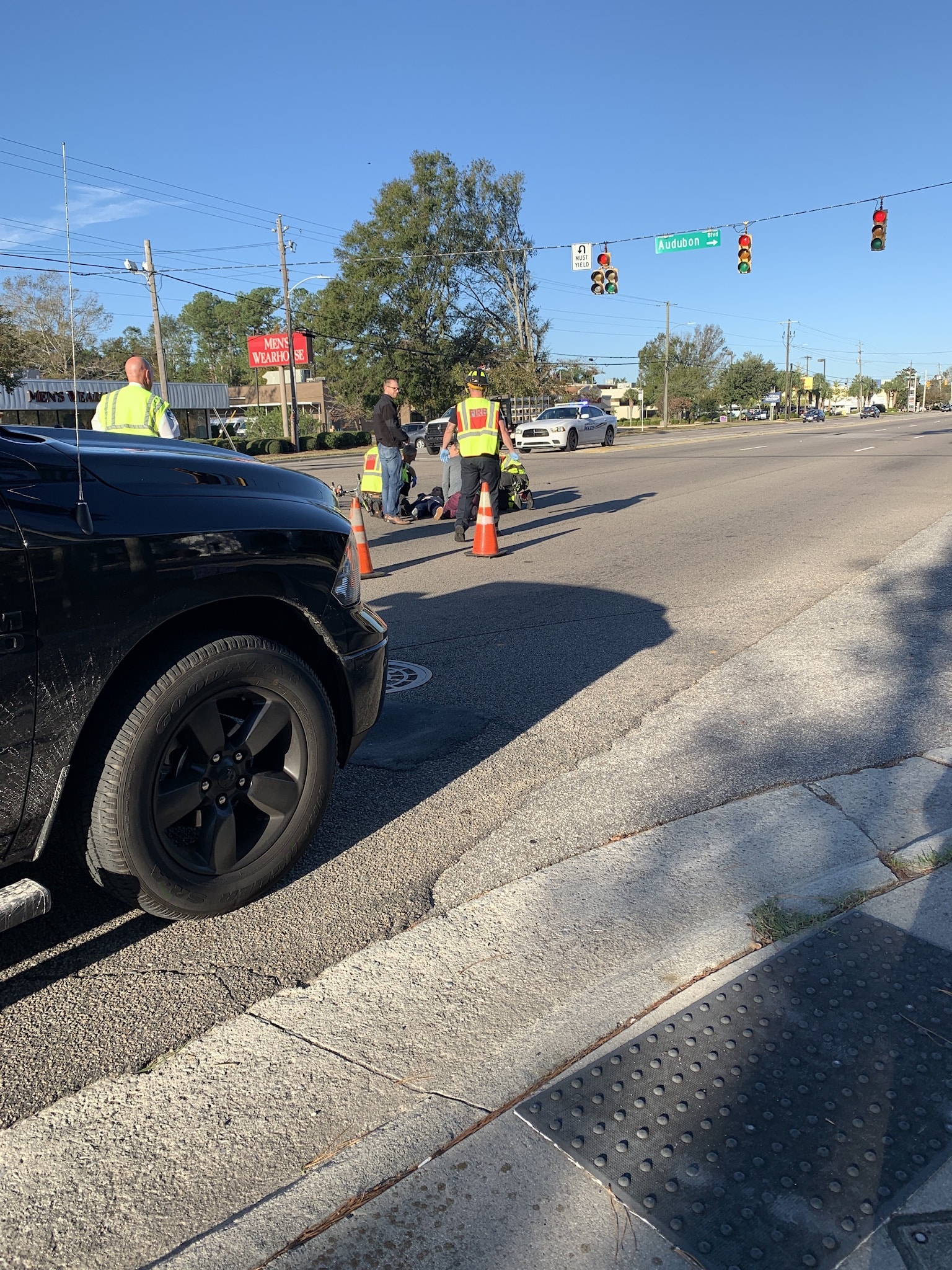Contributory negligence is most frustrating when a driver knows he did something wrong, admits he did something wrong and is still trying to get out of it by arguing that the person he hurt is at least some small percentage at fault. A surprisingly not-so-uncommon explanation: “Yeah I know I didn’t look before turning right on red, but that cyclist should have known I might be negligent and been able to avoid running into the side of my car when I darted out in front of him.” In 46 states, anyone would laugh at such an argument. In North Carolina, it has a decent chance of getting that driver out of having any responsibility for his actions.
That was the approach the driver took last week in our jury trial in Mecklenburg County. The driver’s attorney argued more than once to the jury that they only had to find our client 1% responsible and then he would get nothing. Thankfully justice prevailed this time.
It helped to have a client who is a careful and experienced cyclist and was a great witness (not because he’s a fabulous public speaker, but just a straight-up honest guy). It helped that I knew the scene so well and that we were, well, just right about this. Unfortunately, thanks to our State’s outdated and unfair law, it just took a lot of work and perseverance to resolve a case that shouldn’t have taken more than a couple of conversations to settle.
A little background – the collision took place at the intersection of Charlotte’s Lynx light rail trail and Clanton Road. The rail trail is, in parts, a greenway-type path that runs generally along the Lynx corridor. The length of the corridor sees a patchwork of bike lanes, sidewalk and trail. In places where it’s confusing, the city has painted the path a bright blue. About a half a mile north of where the collision happened, the bright blue bike lane crosses the road and leads to a brief sidewalk section against oncoming traffic before it continues straight along the semi-protected rail trail. In the middle of the road along the blue paint is a big white arrow and a bicycle symbol, clearly saying, “BIKES FOLLOW THIS PATH”
Anyone heading North or South along this corridor on a bicycle would take this route. We used to organize a Wednesday lunchtime ride from our office to Renaissance Park. This was the route we took every time. In most places, it’s a really nice, wide-open path. You ride for long stretches without any intersections. Just North of where the crash happened, you can’t even see the road from the path and you have a nice view of Uptown Charlotte as you ride along in complete safety. Your other options are busy roads or gnarly sidewalks.
The part of the path right before the crash site, just South of the intersection with Clanton Road is wide and has only one entrance crossing it – the entrance to the Scaleybark Station park and ride.
Our client regularly took this route from his home into town. Unfortunately, on the day in question, he encountered a driver who had more important things on his mind, like turning right on red, than watching for people on trails. As our client approached the intersection of the trail with Clanton Road, he slowed and was carefully watching traffic. He saw that traffic on Clanton Road had the red light. Traffic on South Blvd (parallel to the path) had a green light. The crossing signal shone the white man walking. He saw a car in the right turn lane on Clanton, behind the crosswalk and the stop line. As he got closer to the intersection, the car was still there, presumably waiting for the light to turn green. Our client began to enter the intersection. Just as he did, the car suddenly went forward to turn right on red. Our client locked his brakes and skidded his tires, but it was too late – he slammed into the car, just in front of the front wheel well. The impact dented the bike frame and bent some parts. He himself went up on the hood and slid down onto the road. Although the hit shook him up and beat him up a little, he survived it with a sprained wrist – just a few orthopedic visits and a splint.
Our client came to us after he tried to get the driver’s insurance company to pay for his totaled bike. Not only did they refuse to pay – they asserted a claim for damage to the driver’s car! The adjuster thought our client was clearly at fault because he was “riding a bicycle on a sidewalk against traffic.” We were sure the insurance adjuster just misunderstood the scene and that we could convince him to reverse his decision. Jana and I went out to the path, took video and photos and shared our personal experiences with him. He didn’t budge. Clear contributory negligence, he said.
We filed suit. In a case with the relatively small amount of damages this case had, you have to carefully consider whether filing suit makes sense. In this case, it wasn’t just about the money. It was about safety. People jogging, bicycling, roller blading, etc., along that trail should be able to cross on a green light and not be in danger of having the guy with the red light run them over.
Next step: written discovery. Intrusive questions about our client’s past. Typical insurance company tactics.
Because the damages in the case were relatively small, we had filed the case in Mecklenburg County District Court (vs. Superior Court, which hears higher damages cases). In District Court, you have to participate in non-binding arbitration. That means both sides tell their story to an attorney appointed to hear and decide the case in an informal setting. Anyone who doesn’t like the result can appeal and request a jury trial.
We lost. The arbitrator informed us that he himself was a cyclist (surprising, based on how little he knew about cycling, but you never know) and that he would never do what our client had done, including that he would never ride his bike on the light rail trail, or “sidewalk” as he called it. No amount of respectful argument, incredulity or any other tactic on my part could change his mind.
So, on to jury trial. First we had to take the driver’s deposition. It was the first time I got to hear his story, since he didn’t testify at arbitration. He said that there were a number of cars waiting for the red light on Clanton. When it came his turn to be first in line, he stopped at the stop line and watched traffic to his left on South Blvd. He then saw a car that had no signal on but somehow appeared it was going to turn right, so he moved up a little. He then realized the car was going to turn right, but before he got a chance to do anything, our client came careening down the path and broadsided him. He admitted that he never once looked down the path before moving forward. When I asked him if he admitted any fault in the collision, he said:
Maybe if I would have paid closer attention to or been familiar with the fact that cyclists are riding down the sidewalk, then I would have probably paid more attention to it, but I’m not used to that.
Ok, so we had some things to work with!
For trial, I planned on using a number of photos as exhibits. You don’t want technology overkill in a small case. We had photos of the path near Clanton Road and of the blue paint areas, with the white markings. I also had google earth aerials to show where the blue started and where it led. We also had photos of the damaged bike and a property damage estimate prepared by Bart Stetler at Queen City Bicycles.
Before you get to any of that, however, you have jury selection. In jury selection, you get to ask questions of potential jurors to choose the people who are going to hear the case. Both sides get a limited number of strikes they can use for any reason at all. Sometimes people agree they can’t be fair (ie, I hate cyclists and will rule against a cyclist no matter what) and the judge excuses them. If the judge lets you spend enough time and ask the right questions, you have a lot better chance of getting a fair jury. Our judge did and we chose a jury in a couple of hours – a very reasonable amount of time.
After opening statements, the first witness was our client. He just told the story as it happened. No frills or embellishment. Just the truth – I saw the lights in my favor, slowed down to make sure everyone was stopped and then proceeded. The driver darted forward and cut me off. I hit the side of the car, sprained my wrist, totaled my bike, had to drive for several weeks instead of riding for transportation and had to get help lifting items (constantly) at work for several weeks.
Next witness – Bart Stetler. Bart explained how he evaluated the bicycle, where the damage was and what it would take to repair. He explained why you have to replace, not repair a dented frame. On cross examination, he was shown a printout of a google search for the same make of bicycle (at a lower value than Bart’s evaluation) and asked if that was not, in fact, the value of the bicycle. Bart did a great job explaining why online pricing, especially just looking at a printout without details, does not necessarily reflect the price for which you can purchase the same bicycle in similar condition. Most manufacturers do not honor warranties on used bicycles and no one can guarantee that they have never been crashed.
That was it for our evidence. The defense made a motion to dismiss our case. They asked the judge to rule that we had not put on enough evidence for a jury to find the driver negligent. Even worse, they argued that our client was negligent as a matter of law. In other words, that there was no factual issue for the jury to decide – the fact that he had ridden his bicycle on “a sidewalk” and in a crosswalk, meant he was negligent, no matter what. Motion denied.
Next witness – the driver, who tried to downplay all the damaging things he’d said in his deposition. For example, he tried to make it look like he was marginally familiar with the area when he had previously said he drove in Charlotte multiple times per week for work and was familiar with the exact location of the crash because he’d driven there regularly with his family. They even knew all the restaurants in the area.
He tried to clarify the statement he made admitting fault by saying he didn’t think he did anything wrong, but if he had known there were bicyclists using the “sidewalk” and careening toward him he would maybe have waited for the light to turn green in order to turn.
Cross examination was my chance to point out all the inconsistencies and help the jury understand what the driver did wrong. I reminded him of his testimony that he never looked to his right down the path before he moved forward. I pointed out that he would have missed anyone, not just a bicyclist, coming down the path, because HE DIDN’T LOOK.
To his argument that he was just sitting there waiting when our client broadsided him, I reminded him of his deposition statement:
When I realized that the car I was waiting for was actually going to make a right turn, okay, I pulled up, I saw that and I pulled up a little bit more. Then when he made the corner, that’s when I started. It was my turn to go and that’s when the gentleman hit me on the side.
In other words, when he realized the car he was watching on the left was turning, he started to go. He was moving forward when he and our client collided. It was sudden and without warning. It’s hard to tell how well a cross examination comes across when you’re the one doing it, but I definitely had the feeling that Mr. Driver felt a bit uncomfortable.
That was it for the defendant’s evidence. The next part of any jury trial is kind of like the sausage-making. The judge decides what laws and instructions will be read to the jury to guide them in their decision making. No one who isn’t a law geek thinks this part is interesting. I’m a law geek so I do. Long story short, there was a very animated discussion about what the jury should get to hear about bicycles, sidewalks, crosswalks, and pedestrians. The defense wanted to instruct the jury that a bicycle is a vehicle and must follow the rules of the road. I wanted the jury to hear that sidewalk riding was legal for the part of town where this happened. I also wanted them to know about a statute that said drivers had to look for pedestrians in crosswalks and that failure to do so was negligence. The same statute said drivers were supposed to look for bicycles when crossing over sidewalks leaving parking lots, private drives, etc. It wasn’t directly on point but is the only law on the books telling drivers to look out for bicycles on sidewalks. The judge didn’t agree and we didn’t get that instruction.
She did agree to instruct the jury that it is lawful to ride a bicycle on a sidewalk in the area where the collision happened. I know – our client wasn’t on a sidewalk, he was on a multi-use path. But he was headed into a crosswalk. There is no law saying what someone on a bicycle is supposed to do when they get to a crosswalk. Having the sidewalk instruction let me argue, by implication, that it was perfectly legal for him to be in a crosswalk. The defense argued he should have stopped, gotten off his bike, and walked it across. The jury also heard that a driver has a duty to stop at a red light and look both ways for traffic and pedestrians before turning on red.
A side note: the law says that you do not have a duty to anticipate others’ negligence. That doesn’t mean you shouldn’t. Most drivers are TERRIBLE at seeing anything but cars. So don’t take this is as a go ahead to go flying down sidewalks and into crosswalks. Like I always say, I’d rather be alive than right. Intersections are dangerous, drivers are careless, and you don’t have two tons of metal protecting you. Slow down and be careful.
Closing arguments, then jury instructed and sent out to deliberate. We didn’t have to wait long. After an hour they came back and the clerk read the verdict. Was the plaintiff injured by the defendant’s negligence? Answer: “YES.” Was the plaintiff negligent? “NO.” Whew. Big sigh of relief.
Some days, it feels like such an uphill battle – trying to get insurance adjusters, judges and jurors to understand bicycles. This time the work paid off. I can only hope that we did our small part to raise awareness to this issue. I hope the twelve people sitting on the jury go home and tell their friends and family to look both ways before driving over a crosswalk. The person entering could be a small child. It could be anyone. The driver in our case felt indignant about having to yield to a grown man on a bicycle in a crosswalk. But he wouldn’t have seen a ten-year old coming his way either, or a parent jogging with a stroller. He wouldn’t have seen anyone. Because he didn’t look. I feel like we won one battle in the war. On to the next one.
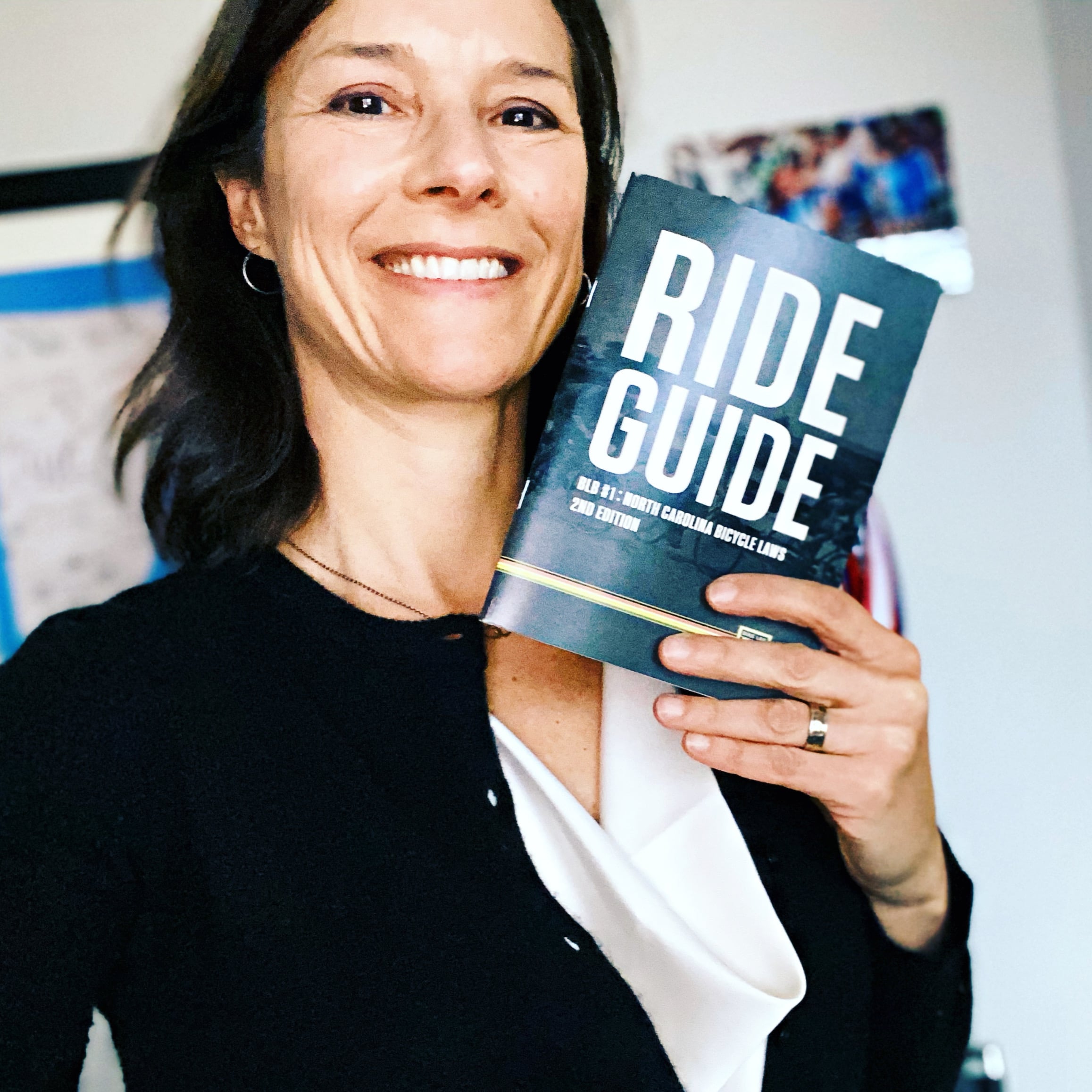
North Carolina lawyer and Bike Law founder, Ann Groninger, has advocated at the state level on behalf of bicyclists in North Carolina for over 15 years. Ann has offices in Charlotte and Durham and has helped bike accident clients in Asheville, Raleigh, Durham, Greenville, Wilmington, Fayetteville, and throughout the state. Read more about Ann on her bio page.



